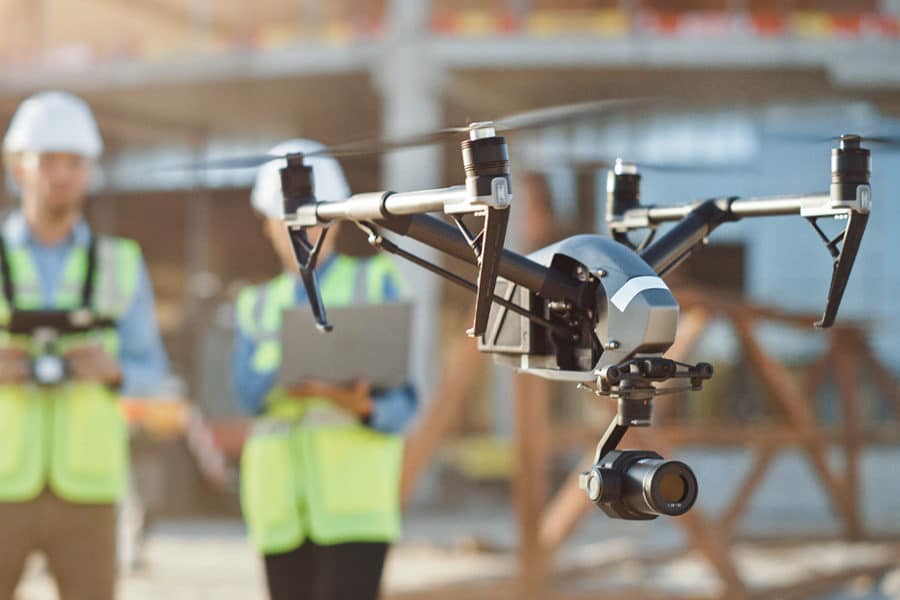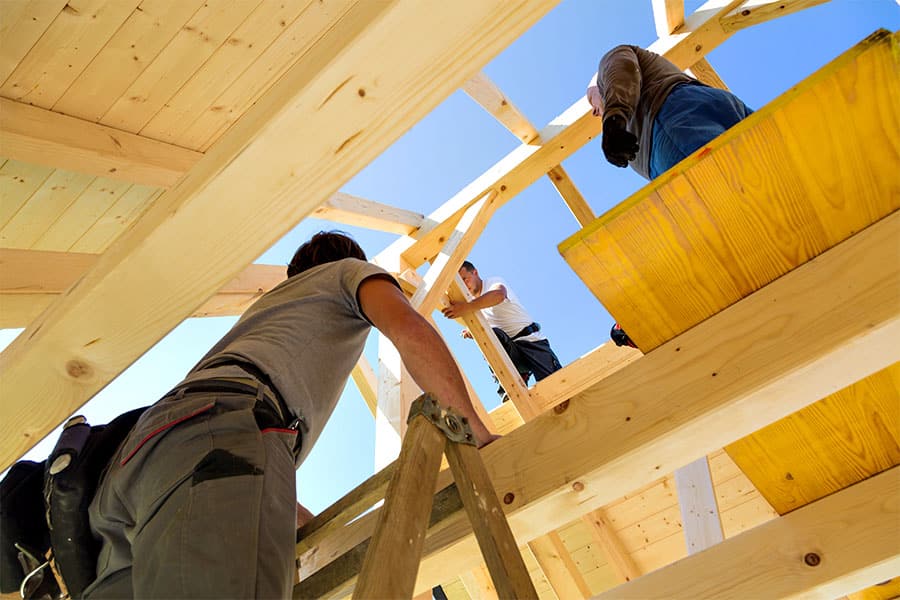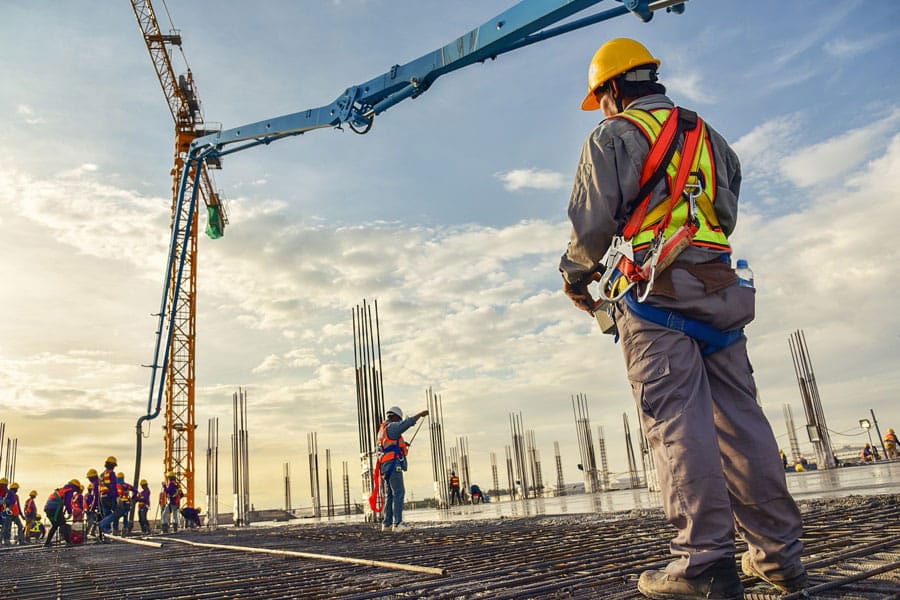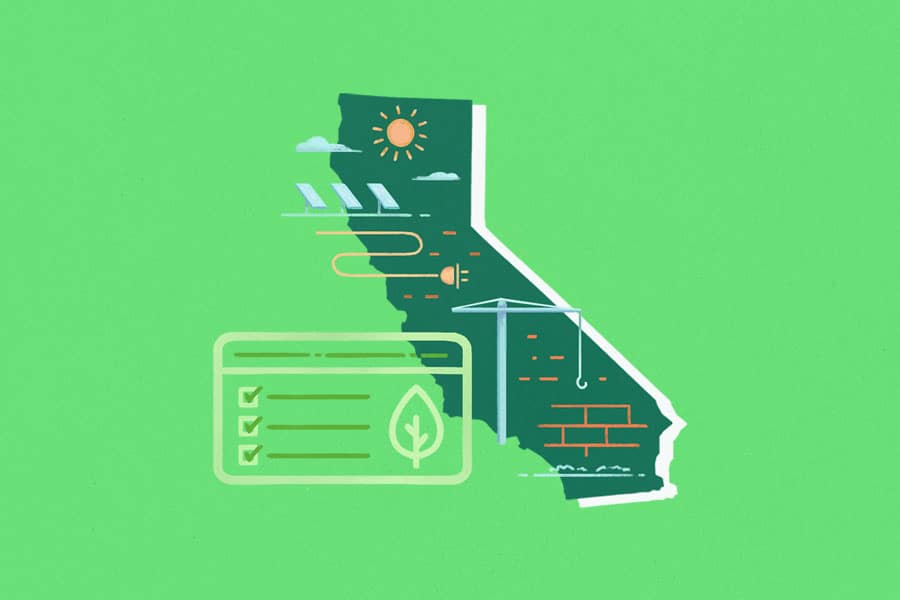The American skies officially welcomed commercial drone usage in 2016. That was the year the Federal Aviation Administration (FAA) issued rules on commercial drone usage, 14 CFR Part 107 (small unmanned aircraft systems). Before then, anyone interested in flying a drone for commercial purposes had to apply for a permit from the FAA.
Despite limitations of Part 107, drone usage increased tremendously, and the construction industry has been a leading adopter. Growth in year-over-year drone usage was 239% in the construction industry in 2018. This was well ahead of mining, which took the No. 2 spot with 198% year-over-year growth.
According to JBKnowledge’s 2020 Construction Technology report, 43% of respondents use drones on their jobsites. Year-over-year growth settled down at 5% in 2019 and less than 1% in 2020. But there may be a spike in usage coming soon.
The FAA recently amended commercial drone regulations, which took effect in April 2021, that may have a big impact on construction. The amendments expand use opportunities over construction sites. They also have the potential to simplify (and lower) compliance costs for drone usage on construction projects.
As drones continue to prove themselves a valuable construction technology with quantifiable benefits, their return-on-investment (ROI) calculation for construction companies and contractors may only improve.
Boundless opportunities
Drones offer advantages at every phase of the construction project lifecycle. Their speed and maneuverability mean they can complete land surveys and site inspections in a fraction of the time and cost of those done manually. The high-resolution cameras attached to drones means they perform these tasks with greater accuracy. They can also inspect places too difficult or dangerous for humans.
A survey of construction companies taken by DroneDeploy found that those using drones experienced a 55% improvement in jobsite safety. Another serious time-and-cost-saving use of drones is tracking equipment and materials.
When coupled with additional hardware and software applications, drones provide new means to help manage construction timelines and budgets. They can provide architects and engineers with current topographical maps of a site at the start of a project. Drones collect a high volume of data and imagery that can be used by CAD and building information modeling (BIM) software to create design and planning simulations.
Once construction begins, the 3D models generated by drone-collected data provide detailed visualization of progress for all stakeholders. These models also highlight any discrepancies between the as-design and as-built plans. When a thermal sensor is added to the drone, it can identify hot and cold spots that might indicate a leak or electrical issue.
All told, drones can deliver an array of services to simplify and enhance construction project management.
Navigating compliance issues
Drones slash the costs of complying with construction site inspection and safety requirements by doing in an hour what used to take days. Yet they come with their own set of compliance obligations and costs. The FAA adopted Part 107 to streamline some aspects of drone usage. Commercial entities no longer had to apply for a permit, but Part 107 has so many operational restrictions that waivers are often needed.
For example, Part 107 prohibits flying drones at night or over people. If drones can’t be flown during the day because workers are on the jobsite, this severely limits the drone’s utilization window for construction projects. Companies can apply for a project-specific waiver of Part 107 restrictions. Writing a successful waiver application requires detailing the “operational hazards and proposing risk mitigation strategies,” without which the waiver application will be denied. As a result, the existing waiver process is time-consuming and expensive. In fact, most Part 107 waivers are denied for insufficiency.
Recent amendments to Part 107 show that the FAA is slowly moving away from regulating drones by exception. The amendments replace the waiver process for flying over people or night flying with pre-qualifying requirements. Part 107 already requires licensed drone pilots to operate the drones. Amended Part 107 requires additional pilot certification to fly at night. Instead of needing a night waiver, the updated Part 107 allows night flight if the companies use a drone pilot with a current night certification. Drone pilots must get recertified to fly at night every two years.
The new Part 107 takes a similar approach to flying over people. Safety is the FAA’s greatest concern. For instance, what happens if a drone drops out of the sky? The amended Part 107 addresses this issue by grouping drones into three categories, defined by the severity of injury it could cause.
The regulation quantifies the scope of potential injury by how much kinetic energy the drone has on impact and whether it has external rotating parts. Each drone category has its own parameters on when and how it can fly over people. Category 3 drones, which could create the greatest injuries, can only be used over an area with restricted access.
It will be up to the drone manufacturers to conduct the testing that proves to the FAA how a certain drone model can be categorized. The FAA will set up a database of drones approved by category. So, under the new Part 107, companies no longer need to apply for a project-specific waiver to fly over people. Instead, they can fly over people within the restrictions placed on the category of the FAA-approved drone model that will be used.
According to Greg Reverdiau, co-founder of the Pilot Institute, a private organization that prepares people to pass FAA drone and airplane pilot certifications, “the change to flying over people is going to open up a lot more opportunities. The cost of compliance will come down for end users, like construction companies, because the manufacturers and drone operators will do all the paperwork to prove to the FAA through testing which category a drone model fits.”
Since the compliance testing is done on the drone model, and not a waiver process that needs a unique application for each project, the overall compliance costs for the industry will come down.
The horizon in drone regulation
The amendments left in place Part 107’s prohibition against flying a drone outside of the operator’s visual line of sight without a waiver. As technology and experience change the risk management equation, more amendments to Part 107 are likely.
Yet Part 107 is only one aspect of the legal scheme companies need to navigate if they want to use drones over a construction site.
Nearly all 50 U.S. states and more than 100 local jurisdictions have laws and regulations for drone usage. Many are in place to protect people’s safety and privacy. Depending on the jobsite’s location, these laws, which are often designed as anti-harassment or anti-nuisance laws, may be applicable. For example, Oregon allows a property owner to sue someone flying a drone over their property below 400 feet. Other laws prohibit using drones to take photos of people without their consent. A Florida town prohibits flying a drone within 25 feet of a person or building.
Part of the compliance challenge is that these types of local drone laws may clash with federal control of airspace. There’s a fight brewing as to whether states or localities can regulate where drones fly. The FAA’s position is that federal preemption gives it control over the airspace. Yet some of these local laws specify airspace restrictions.
The federal Drone Integration and Zoning Act (DIZA), recently re-introduced in the Senate, applies principles of federalism to drone regulation. DIZA would allow for greater local control of drone operations, including allocating to the states control of airspace below 200 feet.
The FAA already recognizes local authority to regulate the takeoff and landing of drones. As a result, Reverdiau said, “I’ve seen the state, local and municipal levels realizing they can monetize the growing drone activity through taxes and fees.”
In some ways, compliance with certain federal regulations is about to get easier and less expensive. A local assessment of drone laws is necessary. However, local compliance management is always an issue for construction projects.
The greater challenge is navigating the ambiguities that may exist between local and federal drone regulation. Thus, the drone landscape remains a bit messy. Even so, it will be increasingly difficult for a construction company to ignore the positive impact drones can have on project timelines and budgets.
















